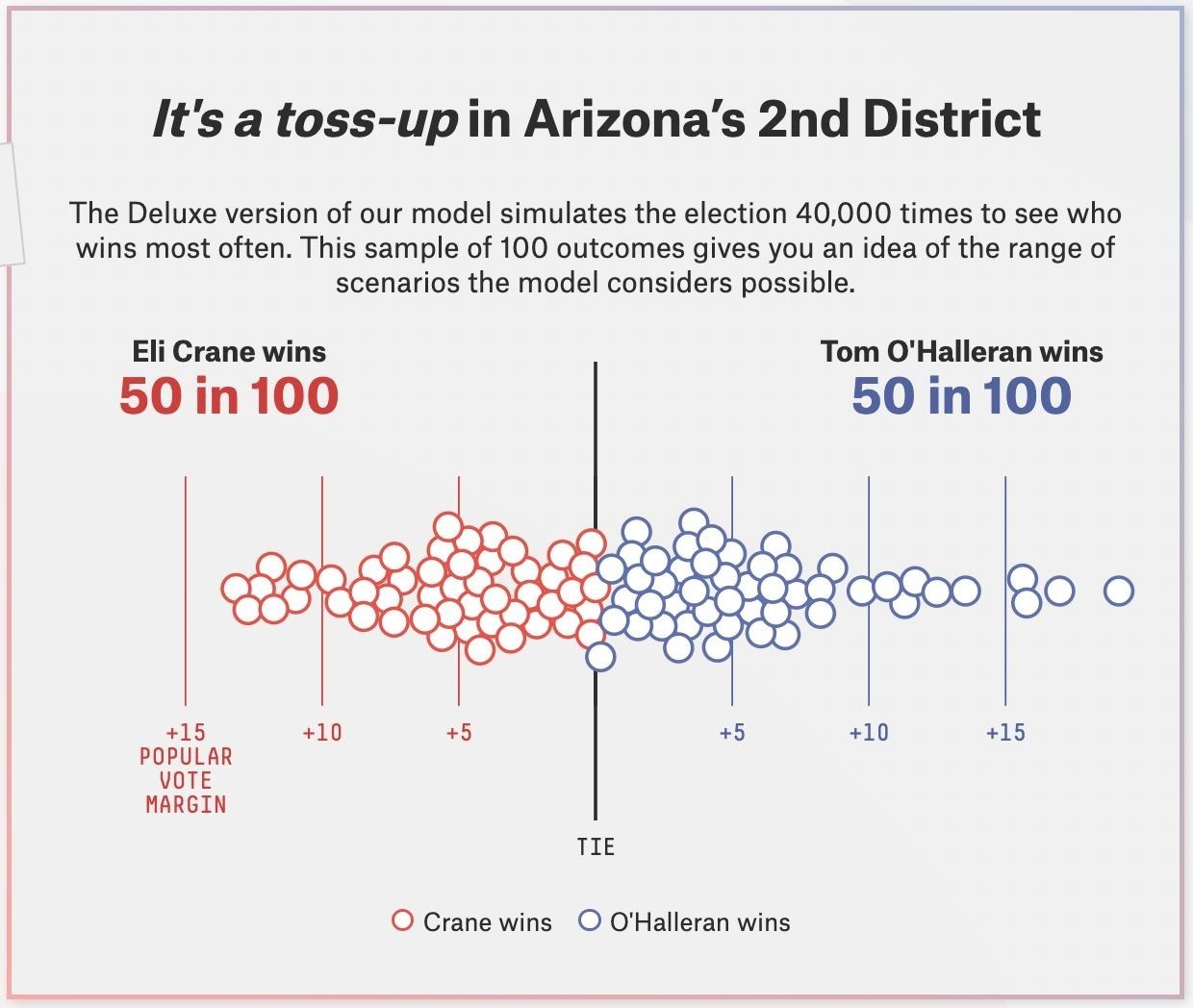The Arizona Agenda had something important to say about polls on Thursday:
At their best, polls are accurate snapshots of public sentiment at a moment in time — and in politics, a lot can change in the next moment. At their worst, they’re political tools meant to sway public opinion, not reflect it.
We all know Arizona’s statewide races will be close — nearly every race is within the margin of error1 — so we don’t put a lot of stock in any single poll, especially this far before an election.
But polling, in the aggregate, can accurately reflect broad trends and provide a decent overview of which races will be harder fought than others. And the more dialed-in crosstabs focusing on a slice of the polled electorate can provide some valuable insight into where a candidate’s support is coming from or lacking.
The Daily Agenda: A day at the horse races
Over the next few weeks, you’ll be seeing a lot of polls. The best advice: Don’t get excited about anyone of them.
Nonetheless, if you spot trends like this one, it’s fair to do a little dance step or “whoop!”
Arizona Agenda advises, “if we’re looking for election predictions, we prefer the less-scientific yet more honest assessments of groups like Cook Political Report, which take into account a variety of factors, including polling, campaign finance, and some gut feelings.”
We need that additional info in our other federal race, Congressman Tom O’Halleran vs. Bullet-Bottle-Opener Guy Eli Crane. Here, we’re encouraged, but we are weeks-of-hard-work-away from that happy dance or whoop. Arizona Agenda reports that O’Halleran’s district swung from “likely Republican” to “lean Republican” in Cook’s assessment because O’Halleran is better funded, and Republicans are swooping in to help Republican Eli Crane, which they wouldn’t do unless “they thought the race wasn’t somewhat close.” On 538 the race moved in the same, positive direction:

We’ve said in other years that O’Halleran’s contest was close, but the Redistricting Commission’s addition of Yavapai County to the district really makes things more difficult. O’Halleran may be the ideal candidate to overcome the new burden because he represented Yavapai County in the legislature. And, the Republicans have not brought their best to this race with Eli Crane, who doesn’t live in the District (he lives in Tucson) and whose entrepreneurship rests on designing a beer-bottle opener that looks like a bullet. Eli is also an election-denier and opposes reproductive healthcare. Meanwhile, O’Halleran just keeps delivering for his constituents. But, we digress.
Our important statewide races are effectively ties. As Arizona Agenda said, “Arizona is increasingly a truly purple state, and when it comes to the statewide races, as far as we and Cook are concerned, they’re all tossups.”
In this regard, you may have seen a recent poll showing election-denier and J6 insurrectionist Mark Finchem leading Adrian Fontes by 5 points in the critical race for Arizona Secretary of State. This is a perfect example of when NOT to panic in reaction to a single poll. Five points in that poll is within the “margin of error.” Always look for that in the fine print.
A perfect way to close this discussion is to answer the question, “What’s the margin of error?” because the answer emphasizes why getting excited about ONE poll is a mistake. As explained in the footnote to the quotation that led this piece, the margin of error describes the amount of variability we can expect around an individual candidate’s level of support. Pew.
So, in the Fontes/Finchem poll, where there is a 3.83% margin of error, Fontes’ support at 35% could actually be anywhere between 31%-39%, while Finchem’s support at 40% could be anywhere from 36%-44%. In other words, neither of them has a clear lead. Layer on to that the 20% of the voters indicated they were undecided, and you can see that this poll tells you nothing at all except that you should go canvass or hop on a phone bank!
Share this: